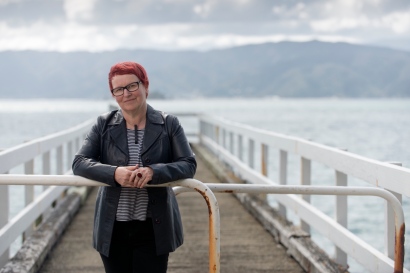
When I interviewed New Zealand-based Australian author Tracy Farr for The West Australian and Good Reading magazine earlier this year — ahead of the release of her second novel The Hope Fault (Fremantle Press) — it was like being reunited with a long lost chum. We chatted for more than two hours, about the exquisite prose of the new novel (she was modest and gracious in response to my compliments); the beauty of the area in Western Australia’s South West that provided the inspiration for its setting; and the importance of family, especially, as Tracy said, “extended, messy, non-linear family”.
While her first, critically acclaimed, novel The Life and Loves of Lena Gaunt chronicles the experiences of a passionate, self-absorbed individual across several decades, The Hope Fault focuses on relationships among an ensemble of characters, who are confined to a house and its surrounds for just three days. A secondary storyline offers a backward glimpse, in fragments, at the life of the family matriarch, nearing her 100th birthday.
Inspired in part by a scientific bulletin about a geological fault line in New Zealand’s South Island, The Hope Fault is a subtly deceptive depiction of everyday life, in which it seems at first that nothing much happens, yet so much is going on beneath the surface. Again in Tracy’s words, “It’s a novel about family and, in particular, about steps and exes and in-laws and aunties and fairy godmothers. And it’s very much about parents and partners who are missing, and the people who replace them.” In my words, it’s “a slow-burner that leaves the reader contemplating its many implications long after the last page is turned”. In case you can’t tell, it’s a beautiful story beautifully told.
When I invited Tracy to be a guest on Shelf Aware, I knew that she would put a great deal of time and thought into her responses to my questions, and into her selected photos. As you will see, I wasn’t wrong. I know you’ll enjoy this opportunity to get to know a little bit about Tracy Farr through what she loves to read, and what she holds dear. And, just as a timely reminder, books make excellent gifts for Mother’s Day — especially when the central character is a mother. Enjoy!
Q. Tracy, how would you describe the work that you do and how you do it?
A. I collect, find, chase, and make connections between ideas and words and things, and puzzle them into stories – mostly novels, but also short fiction.
Q. What is your latest project, and/or what do you have in the pipeline?
A. My second novel, The Hope Fault, was published in March, so I’m enjoying the ride and keeping busy – interviews, reviews, events – as the novel finds its way out into the world. This means I’ve been neglecting my third novel, but I’m hoping and planning to get solidly stuck into it this month, once I have a clear schedule. The third novel is in its very early stages, but I’d describe it (so far) as a novel about three sisters, identical triplets, born in an amusement park in the early twentieth century.
Q. Where are the main bookcases in your home or office? Do you also keep books in other places at home (or elsewhere)?

A. Our house is small, tall and skinny with lots of stairs, and the living space is open plan, with not a lot of wall space for bookshelves. So, piles of books accumulate on tables, floor, stairs, sofas – basically any flat (or not so flat) surface. There’s one very pleasing wall of books in the living room, on shelves we had made for the space about five years ago. High shelves in the kitchen hold my cookbooks.
Downstairs, there are bookshelves in my writing room (aka the spare room), and a big old 1940s cabinet that was removed from the wall of our kitchen ten years ago is now a good-sized bookcase in our bedroom. There are more bookshelves in the shared space upstairs next to my son’s bedroom, though the books there are all shelved two or even three deep. We really need to find space for some more bookshelves (and/or get rid of some books).
Q. How are your books organised/arranged?
A. I’d love to be able to tell you otherwise, but our books are organised very badly, or not at all. I seem to operate in two modes: obsessively organised, or explosively messy, and at the moment I’m in a very random and messy phase with books (time to get obsessive!). Books are pulled from shelves (to read, to look something up), then end up in a pile with who-knows-what other unrelated books. The piles (and shelves, and boxes) of books waiting to be read are becoming overwhelming. In my ideal world, though, books’d be organised into fiction (alphabetical by author, with some themes or collections) and non-fiction (loosely by subject) shelves.
Q. What sorts of books predominate?
A. Fiction predominates, and I guess you’d call it mostly literary fiction, though crime fiction is well represented. It’s mostly novels, though there are short stories and poetry collections, and plays that mostly date from my uni days; some graphic novels, too. There’s a lot of writing from the three countries I’ve lived in: Australia, Canada and New Zealand. 
Our non-fiction books lean mostly towards either science or music, with sidelines in film, art, architecture, popular culture, biography. I’ve accumulated some writing reference books, mostly writers writing about writing, though for those I still often dip into what’s in the public library. There are always library books in our house.
Q. Describe your favourite reading place.
A. My favourite reading place is anywhere I can surround myself with pillows and put my feet up, with my cup of tea (and the teapot, for refills) within reach. I love reading in bed (especially in the daytime), or on the sofa. I also love reading outside, especially when it’s cold and I can rug up in uggies and hat and scarf; we have a good space for that at the back of our house, snug and protected from the Wellington wind, where I often read and write.
Q. What book/s are you reading right now? Why did you choose that book/those books and what do you think of it/them so far?
A. I stayed in bed this morning and finished reading Grief is the Thing with Feathers, a slim slip of a book (only about 110 pages, with generous spacing), by Max Porter. It’s a novel, though it feels and reads like a long poem, or a collection of poems. It’s very beautiful, very sad, very funny. I’ve been wanting to read it for ages, and finally bought it for myself a week or so ago, as a treat. Auckland Writers Festival is coming up in the middle of May, so before then I’ll be reading writers I’m in session with (including Susan Faludi, whose memoir In the Darkroom is next on my reading list), or am keen to see (like George Saunders).
Q. What are your favourite books and/or who are your favourite authors?
A. I always go blank when faced with that question, as if it’s too big a concept to consider, so this is an answer for today, for now, not for always. I would read anything Helen Garner wrote – I’d read her shopping lists! – and I love her non-fiction writing, but her fiction (those slim wee books, like The Children’s Bach) is most special to me. I’ve been obsessed with Deborah Levy’s novel (yet another slim one) Swimming Home for some years – I can’t work out why I love it, but I do. An old favourite is Carol Shields’ The Republic of Love.
I return often to A.S. Byatt’s novels (Possession is a favourite). Kirsty Gunn is another writer whose work I love – The Big Music is magnificent. Joan Didion’s book (would you call it memoir?) The Year of Magical Thinking is beautiful and wonderful, measured.
Last year was a year of discoveries, catching up on great writers I’ve somehow missed, like Ann Patchett (Bel Canto, Commonwealth, and her essays and memoir), Elizabeth Hay (A Student of Weather, His Whole Life); wonderful collections of short stories by Elizabeth McCracken (Thunderstruck) and Lucia Berlin (A Manual for Cleaning Women). And closer to home, last year I was sideswiped (in a good way) by the beauty and wonder of Stephen Daisley’s novel Coming Rain, and moved, astonished and delighted by Sarah Laing’s graphic memoir Mansfield and Me.
Q. In the event of an emergency, if you could save just three books from your collection, which books would they be – and why would you choose them?
A. First would have to be my dad’s childhood copy of A.A. Milne’s The House at Pooh Corner (2nd Australian edition, published 1944) (I’d sneak in his copies of Winnie the Pooh and Now We Are Six, too). I’ve been holding this particular book in my hands since I was very young, and it’s so very familiar to me, and very precious. My grandmother inscribed it ‘With loving Xmas wishes from Mummie and Daddy Xmas 1945’; Dad stamped his name in it as a child; and I copied him, writing my own name (and arrows; why the arrows?!) in pencil – the closest I got, even as a very small child, to defacing a book.
I might save my slim copy of Helen Garner’s Postcards from Surfers, particularly now that it’s inscribed by Garner (in the signing queue at Auckland Writers Festival I 2015; I never did manage to introduce myself properly and have a natter other than in the queue, to my regret). I bought the book in Nedlands in 1989, and it was one of just four books I took with me at the start of seven months backpacking. I started reading it in Paris (starting, of course, with the story titled ‘In Paris’) on the first night of my great adventure, eked out its reading over weeks, read and re-read it. I carried it with me for months, and couldn’t bear to swap it at a youth hostel. I sent it back home in a box of treasures, posted from (I recall) somewhere in Greece, perhaps the island of Sifnos.
For the third, I’d be tempted to grab my reading copy of The Life and Loves of Lena Gaunt. It’s getting tattered, but I’ve annotated (in pencil and sticky notes – I still can’t bear to deface books) passages I’ve read over the years, crossed out words and whole paragraphs, arrowed to indicate a skip to the next page to avoid a spoiler or keep to time. It’s signed, too, by some of the writers I shared sessions with in the first festival I was a guest at, Perth Writers Festival in 2014, a tradition introduced to me by Canadian writer D.W. Wilson. I haven’t kept the tradition going, so there are only those few inscriptions (from Dave, Jordi Puntì, Inga Simpson) from February 2014, but I cherish them, marking the start of my public career.
Q. If you could sit down for afternoon tea with your three favourite characters or authors, who would they be, what would you serve them, and what would like to talk to them about?
A. I have often been spectacularly gobsmacked and struck dumb when meeting my writing heroes, so I think I’d be better off meeting fictional humans. Actually, to be even safer, I’d better stick with fictional animals. Perhaps Pooh, Paddington, and Piglet? I’d serve a large pot (or two) of honey for Pooh, marmalade sandwiches for Paddington, haycorns for Piglet. We’d talk about Darkest Peru, where to get a stylish duffle coat, How to Catch a Heffalump, and what it is like to be a Very Small Animal of timid disposition. We would, I hope, sing some songs (Tiddely pom).
Links
Website: tracyfarrauthor.com
Twitter: @hissingswan
Facebook: /tracyfarrauthor







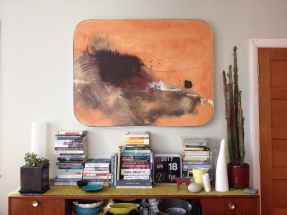



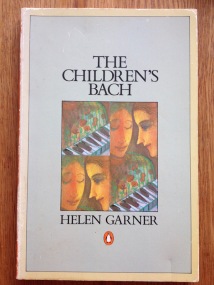



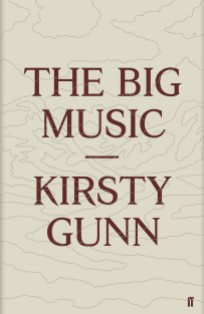


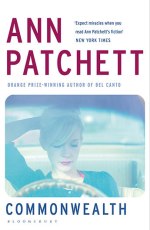


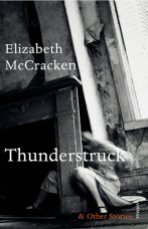












Fascinating blog. Thank you. I so miss my bookcases. No room in the caravan!
LikeLiked by 2 people
If it wasn’t for books and bookcases, I’d fancy living in a caravan or tiny house! Glad you enjoyed the blog, post.
LikeLike
Thank goodness for e-books, for those who do live in caravans and tiny houses!
LikeLike
Glad you enjoyed it, Jenn. I thought Tracy’s bookcases looked amazing, too.
LikeLiked by 1 person
Great post, thanks for putting it together, and so beautifully presented. I loved reading about Tracy’s reading and book shelves. Agree with her very much on Garner, too.
LikeLiked by 1 person
I thoroughly enjoyed putting it all together, and discovering some of the books and authors that are important to Tracy. She was such a delight to interview earlier in the year — and I found The Hope Fault utterly absorbing in its portrayal of an excerpt from family life.
LikeLiked by 1 person
I’m really looking forward to reading The Hope Fault. I adored Lena Gaunt, so much. And I really like Tracy, she is a very good egg. Your blog is beautiful, I shall spend some time looking around. But I can’t see a follow button.
LikeLiked by 2 people
Glad you enjoyed it, Jen, and thanks for sharing the post on your beautiful blog. HG, how we love her!
LikeLiked by 1 person
Thanks again for sharing, Jenny!
LikeLike
Glad you like the blog, Jenny. I think it’s beautiful, too, and I’ve been so fortunate to be able to invite so many wonderful guests — with more brilliant and inspirational authors and a publisher or two lined up. I’m not sure why the follow button is not showing. I’m not very experienced with the technical side of things, but I will try to find out how you can follow it. I know others have certainly been able to…
LikeLiked by 1 person
I love seeing other people’s bookshelves. Fascinating and beautiful. Thank you, and thank you Tracy!
LikeLiked by 2 people
It’s such a delight to compare what they’ve got on their shelves with what I’ve got on mine. Glad you are enjoying seeing them, too, Lucy.
LikeLiked by 1 person
Glad you enjoyed it, Lucy — such fun!
LikeLiked by 1 person
Lots of fun to read, that’s for sure!
LikeLike
So many things to like here!
1. Your new book sounds FAB
2. Your day bed looks super inviting next to that bookcase with windows on each side
3. Of all the methods of organisation I’ve seen people write about, this is the first time I’ve seen someone admit to no organisation at all. Love it! There must be a nice bit of serendipity in the system. But also some frustration too, I can imagine. ‘Now where is that f***ing book?’!
4. I can’t believe you don’t even write in your own reading copy – that’s hilarious!
5. Love the idea of the tradition of getting fellow panellists to sign your books – I’m going to adopt that from now.
Beautiful interview Maureen.
LikeLiked by 2 people
1. Thanks Annabel! (and thanks for tweeting the post)
2. The daybed is very old and not very comfy, hence all the cushions (and you can’t see the cat fur…). But yes, a lovely spot with all the windows and books.
3. Quite a bit of swearing happens. I’m reasonably good at putting my hand on a book when I need it, but there is quite frequent walking up and down the stairs and checking various piles and shelves.
4. But I do write ALL OVER my reading copy (see photo of LENA above) — though in pencil, never pen. And in soft pencil, so I could erase it if I wanted to. There is so much writing in my reading copy! That’s why I’d grab it in an emergency.
5. I know, it’s a lovely tradition, isn’t it? I’ll see if I’m brave enough to do it with HOPE — I have my first festival session coming up in Auckland in a few weeks.
Cheers!
LikeLiked by 1 person
I agree wholeheartedly with your comments about the day bed, and can assure you The Hope Fault really is “fab”. 🙂 I think one of the nicest things about not having organised bookshelves might be the many opportunities to “discover” one book when you go searching for another — particularly if the alternative title suits your mood more effectively… That’s less likely to happen if you know exactly where to look for any given book. I’m so glad you are enjoying this series, Annabel. In case you can’t tell, I am too!
LikeLiked by 2 people
The discovery element is something I do enjoy (balanced by the frustration element when I can’t find a particular book). I had a student job a million years ago, one of a small team of 4 students working in Reid Library at UWA each morning before the library opened, checking that books were shelved correctly (they’d say ‘you start at 601.34 today, you start at 603.2’, etc) — in Dewey numerical and alpha order, spines aligned a thumbknuckle back from the edge of the shelf. Man, I loved that job (apart from the early mornings; I’m not a morning person)! One of the best things about it was discovering books — books out of place, but also just books that caught my eye. Skinny books almost lost in between more substantial books (I’m thinking of ‘Paris’ by CK Stead, with illustrations by Greg O’Brien — a beautiful little NZ book I discovered in Reid Library back then, well before I came to live in NZ and discovered who those two men were). More recently, while looking for particular books in my public library I’ve stumbled upon books that’ve ended up being important to me — Deborah Levy’s ‘Things I Don’t Want to Know’ was one, Kirsty Gunn’s ’44 Things’ another. The serendipity of shelves!
LikeLike
Oooh, that library job you had sounds like something I’d love! Although I’d have to come to grips with the Dewey system first! I’d especially appreciate the requirement to have them all lined up perfectly according to specific requirements. I’m the sort of person who, when other people might scoff at servants on shows like Downton Abbey using rulers to precisely align the positions of every piece of china, cutlery or stemware, I’m fist-pumping and shouting “yes!” at the TV — the result of that attention to detail is always impressive. Don’t get me wrong, though; I’m not such a pedant in my own home, which generally has mess in every room, apart from my bookshelves, which are MOSTLY orderly. 🙂
What beautiful serendipity that you discovered ‘Paris’ years before you knew anything about the duo behind its creation. I have a few slim treasures on my shelves, too.
And I was thrilled to see that you have a copy of ‘The Golden Treasury of Poetry’, which was a childhood favourite of mine, and which one of my kindred spirits recently discovered a copy of at auction. Louis Untermeyer’s commentary of so many magical, powerful and beautiful poems is sublime; and I love the quirky beauty of Joan Walsh Anglund’s illustrations. I discovered The Highwayman, The Inchcape Rock, The Tale of Custard the Dragon, Jabberwocky and A Visit From St Nicholas in its pages — and it was there that I had my introduction to Shakespeare, in ‘Queen Mab’ and ‘All the World’s a Stage’. Wonderful memories.
LikeLike
I love the style of that bookshelf in Tracy’s living room – surrounded by large glass windows – it’s stunning. But I think I’d prefer to read on that gorgeous lounge in front of it, rather than in the cold outside – even if I was rugged up like Tracy prefers to.
I loved Tracy’s first two books – can’t wait for her third!
Another great post. Thanks Maureen and Tracy for sharing such an awesome collection of books.
LikeLiked by 2 people
Thanks Marie. I do admit it’s lovely reading in the warmth inside, too!
LikeLiked by 2 people
Snuggling up with a good book is right up there among the greatest of all pleasures.
LikeLike
Maureen, thanks so much for having me on your blog. It was such fun. I’ve been really enjoying the series — there’s something so delightful about stickybeaking into other folks’ shelves.
LikeLiked by 1 person
There is, isn’t there? I confess to purely selfish reasons for asking for the shelfies! Glad you are enjoying it as much as I am.
LikeLike
Definitely my pleasure!
LikeLike
Thanks for mentioning the blog post in your review of The Hope Fault, Marie. I’ve just read (and thoroughly enjoyed) your review. Glad you loved the book, too. It’s subtleties are incredibly thought-provoking…
LikeLike
Too much to love about this:
That copy of ‘House at Pooh Corner’ of Tracy’s father’s is priceless, especially with the defacement!
The room with the windows looks like it’s straight from Pinterest or a home design website—it’s now my ideal reading room. Especially with the guitars as well. Reading + Music = Perfection!
Can’t wait to read ‘The Hope Fault’ and I love the starting point for the new novel! (And how generous of her to divulge it to us!)
Thanks Maureen and Tracy. 🙂
LikeLike
PS. Forgot to mention the dolls’ furniture on the shelf—I love that!
PPS. Also forgot to mention that I love Ann Patchett, too. I haven’t read ‘Commonwealth’ yet, but it’s on top of the pile by my bedside. 🙂
LikeLike